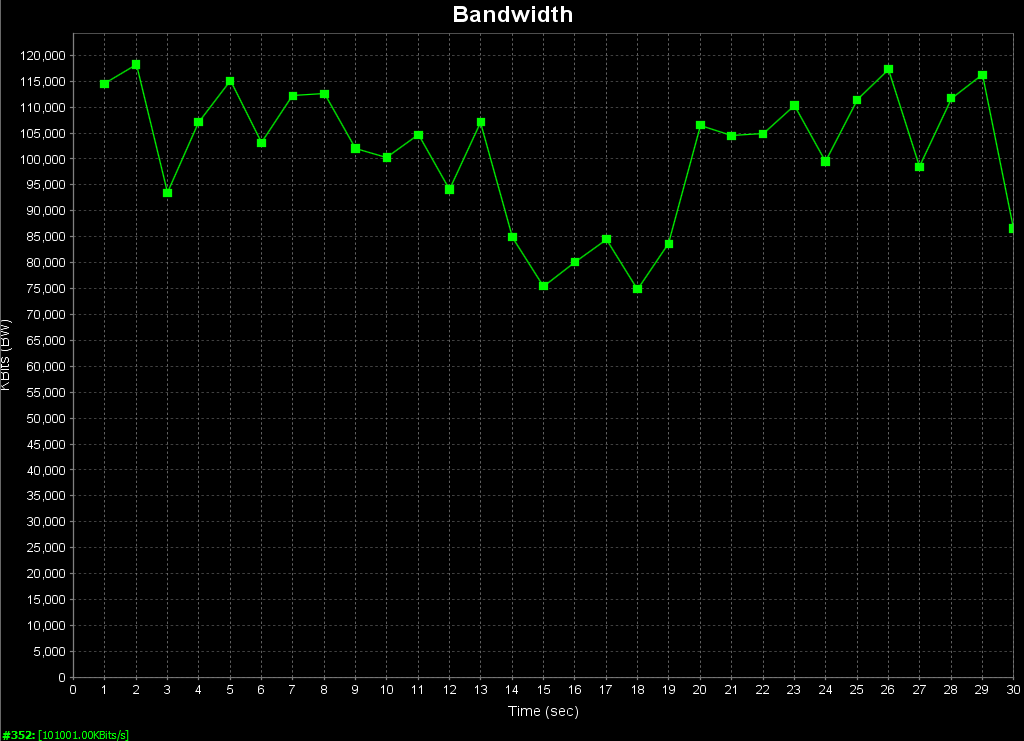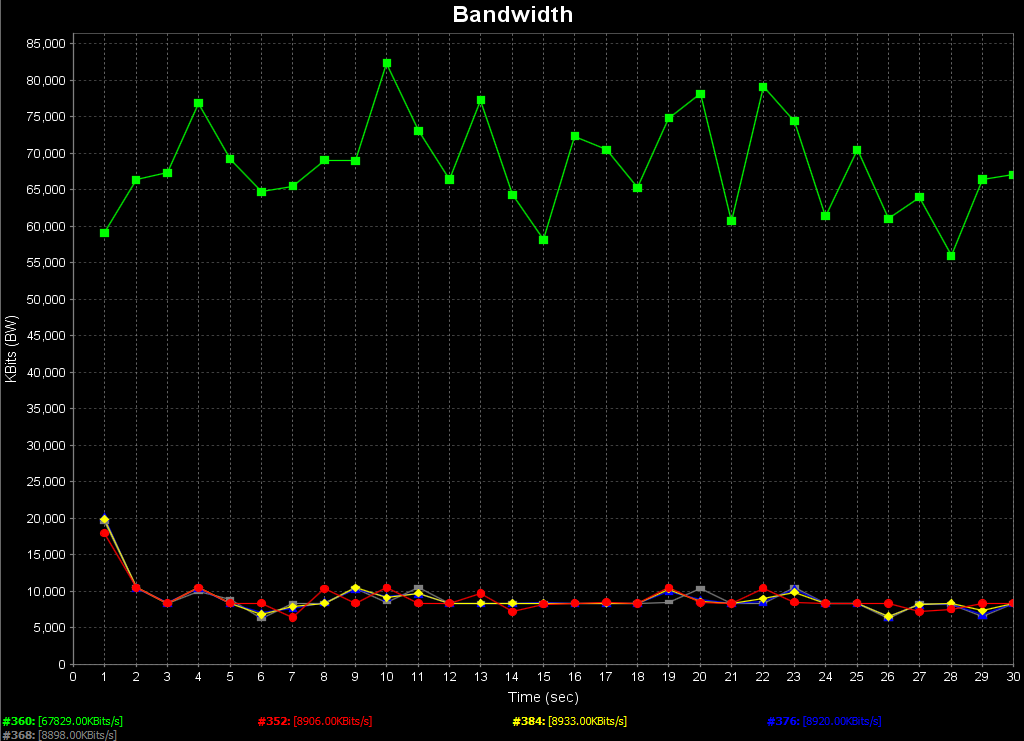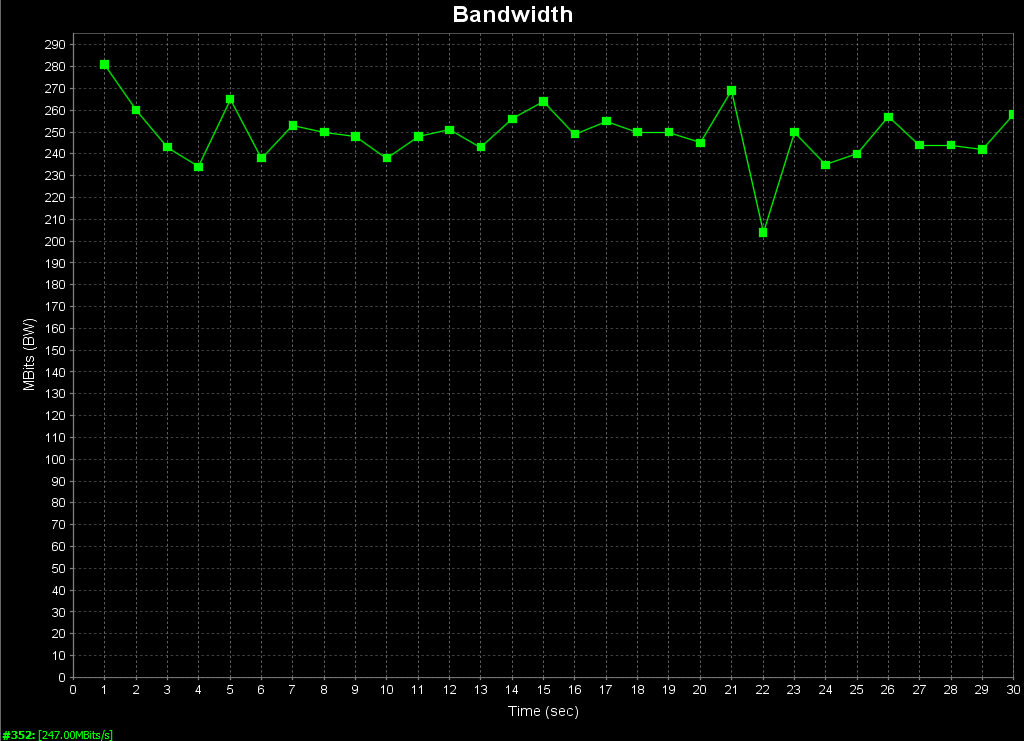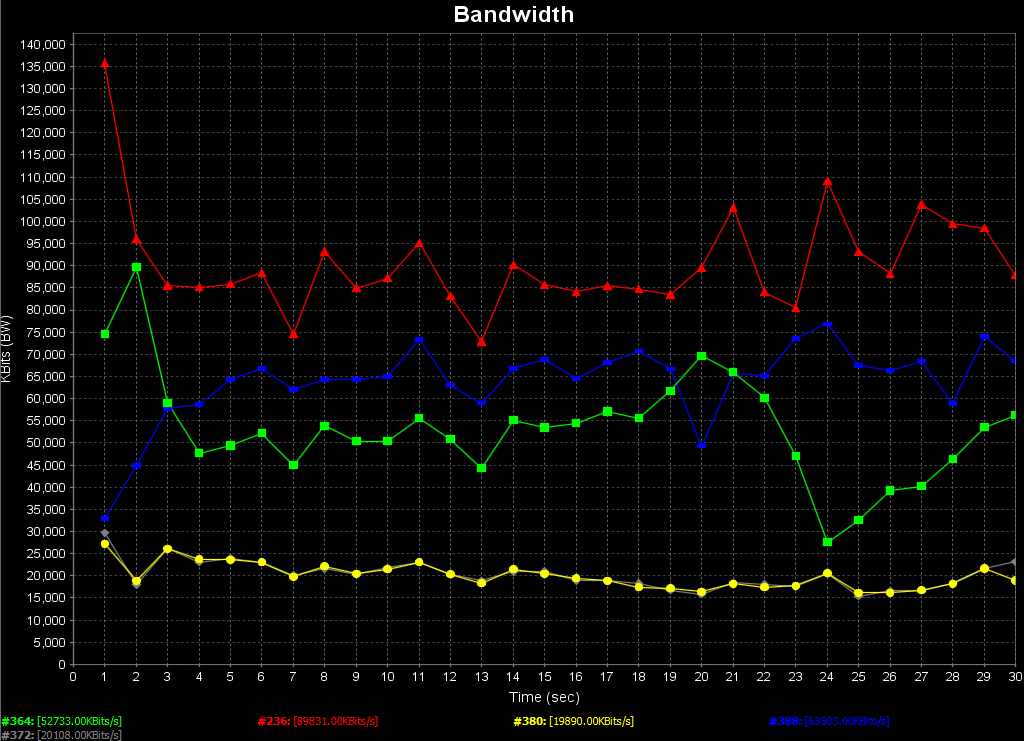Measurements of actual throughput in comparison
Before-after test in my case also means 2x Fritz! Wi-Fi Repeater 1750E vs. 2x Fritz! Wi-Fi Repeater 2400. Miracles due to the one more antenna I did not hope for any, but the result was then much better than actually expected. First, consider the original variant with the two 1750E as a "bridge" between the floors (whereby the lower repeater was not directly connected to the router via Ethernet). The measured values with iPerf and a single stream show very clearly why I had to put my hand up here again:

This does not look better with the test with 5 streams, especially since a stream (reproducible) has been extremely prioritized.

After the installation of the new 4×4 repeaters, the picture is completely different. Let's start again with the individual stream and see that the transfer is much more constant. On average, more than 2.5 times achievable here:

With 5 streams, the picture is also a slightly more balanced one. this is not ideal, but it is quite useful.

A practical test with a Steam download resulted in an average rate of almost 30 MB/s. You can live with this sooner than with the mischievous 11.5 MB/s in the old setup. As I said, time is almost third and things become possible that previously belonged more to the realm of impossibility. Check!
 |
With the graphical interface JPerf (download) you can test your own network perfectly using IPerf as an end user. Theoretical transmission rates and the achievement of the maximum values from the manufacturer's specifications are rarely achievable in practice. The actual transfer rate depends on many factors in the environment. Some things can be influenced by oneself (place of installation, choice of equipment), others unfortunately not (rooms). |
Summary
With the Fitz! WLAN Repeater has succeeded AVM in really enriching the portfolio, because there has been a real gap in the offer so far. While many Fritz! boxes already support 4×4, this was the case with the repeaters (or access points) are unfortunately not possible (maximum 3×3 or 2×2). After several updates, Mesh is now really fun and the conversion was finally more than worth it. In fact, three times as fast as before is an announcement, even if you end up only reaching one third of a real cable network.
But it is better than before and above all all all tasks that such a spatial separation of the individual functional areas entails are finally sovereign and safe to solve. That alone was certainly worth the conversion. I am still waiting for test samples of a new "ring wire" network, where window executions should no longer be an issue. The "up to" 1 Gbps would of course be a certain kick again, but I will have to wait and see if and what really comes next.

































Kommentieren